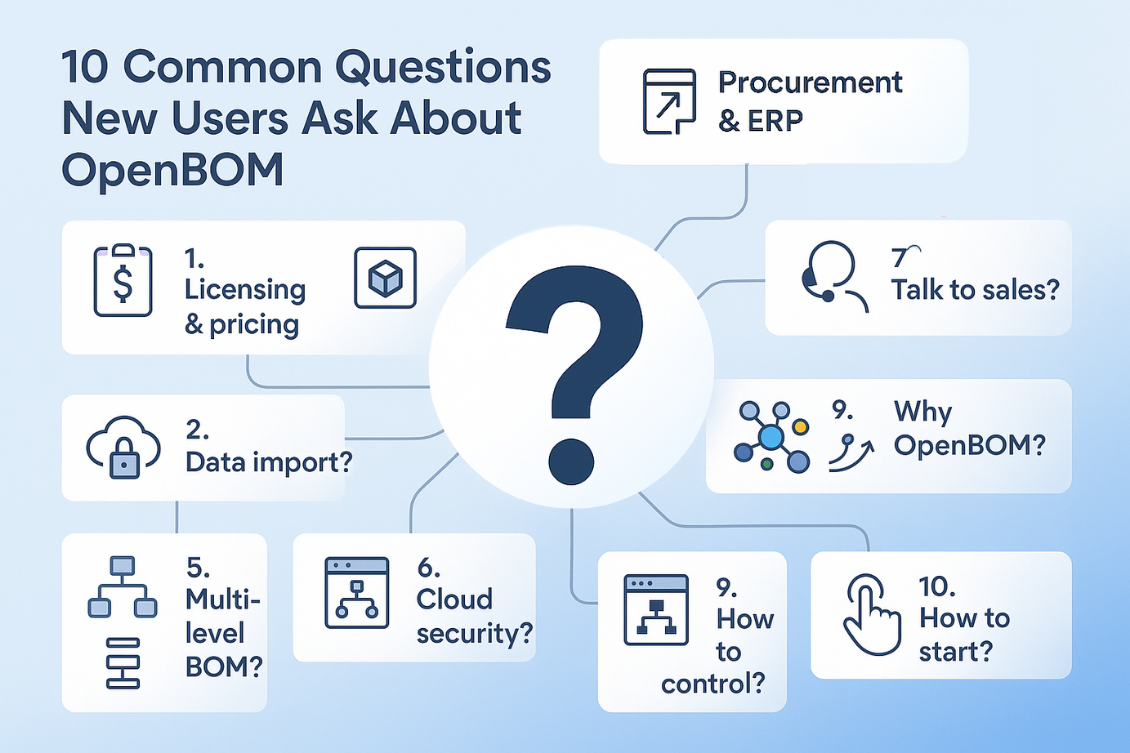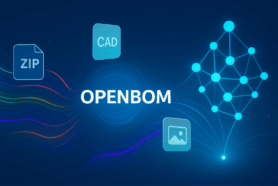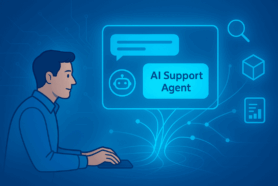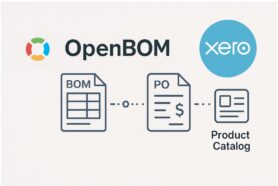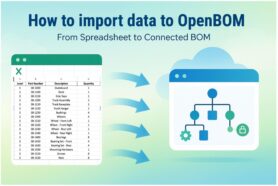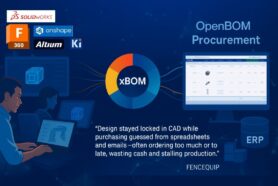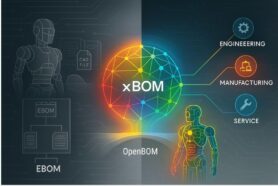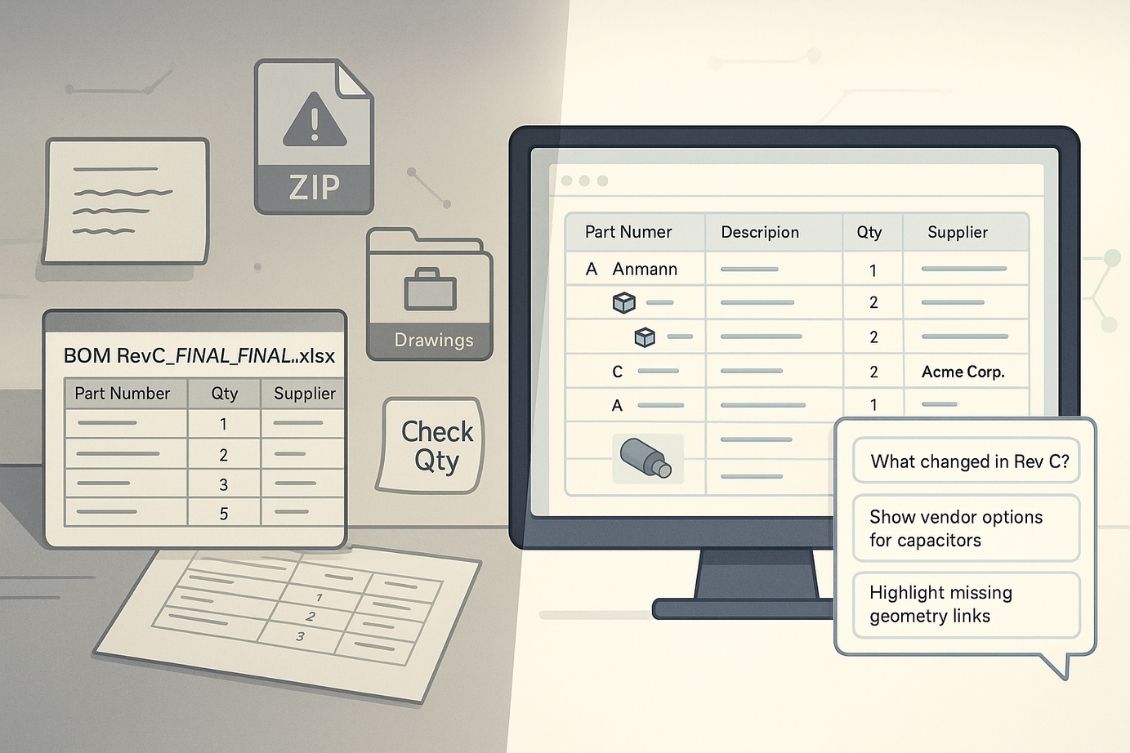
Folders and files is one of the most powerful and well adopted paradigm in the world of engineering and manufacturing. Walk into any manufacturing office, design lab, or supplier shop, and you’ll see the same quiet truth: engineers “speak” in files. A bill of materials? It’s an Excel spreadsheet—maybe a little messy, maybe with extra tabs someone forgot to delete. A quote for manufacturing – here is a STEP file with some additional specs in spreadsheets compressed and zipped with a note like “Final_v2_UseThisOne.zip.” Communication? It happens through email attachments, PDFs with redlines, and folders full of drawings someone swears are the latest—but you’re not so sure.
This isn’t a bug in the process. It’s the process. Across the world of engineering and manufacturing, information flows through files—not elegant APIs or PLM databases. For many organizations, portable, familiar, and chaotic files is the solution for a workflow. And for decades, the adoption of software (including PLM software) to solve this problem was not enough. I wrote about it in my Zappier for Engineers article, which was super resonating.
At OpenBOM, we decided to embrace the challenge and help engineers and everyone else to this process more efficient.
Learning to Speak “File”
OpenBOM flexible data platform allows to users easy import and export data using variety of files (for example Excel with price list, BOM list, zip file with CAD file attachments, etc). We take this capability to the next level, but embracing flexible format transformation and chat-like user experience. OpenBOM learns to read them—to understand them and to turn those files in a rich product datasets.
Imagine OpenBOM works like a translator. It converts those different files into a structured and actionable product knowledge.
Drop in a spreadsheet, and it doesn’t just see rows and columns. It senses patterns—headers that translated to a specific structured attributes, quantities that translated into relationships between parts and assemblies, Supplier information linked to the items, cost, inventory and many other things. Upload a ZIP archive, and it dives in—unpacking, organizing, connecting parts to drawings, linking assemblies to subassemblies. It recognizes filenames as more than text; it sees them as clues to relationships and revisions. And when you upload a new version? It tracks changes, flags what’s different, even highlights potential conflicts—like mismatched part numbers or subtle changes in geometry.
You don’t have to configure anything. No scripting. No mapping. Just drop in the files and watch understanding unfold.
The Hidden Meaning in Every File
Files might look messy, but they’re full of meaning. A drawing labeled “Rev_C_final” tells a story of iterations and approvals. A part number repeated across two spreadsheets might hint at a reused component. A missing file in a CAD assembly often foreshadows an issue down the road.
The OpenBOM AI Agent is built to read between these lines. It combines structured parsing with contextual intelligence to understand not just what a file contains—but why it matters. It notices when revisions don’t match. It catches when a drawing points to a deprecated part. It recognizes that two resistors labeled differently might actually be the same—and offers a unified view for sourcing.
These aren’t flashy, headline-grabbing moves. But they’re the kind of quiet intelligence that prevents mistakes, saves time, and makes workflows flow.
Staying in the Workflow, Not Replacing It
The second thing that OpenBOM Ai Agent enables is that it adapts to the current file-excel-driven process for communication. We found that changes sometimes are too hard and companies keep communicating using Excel files. Here is what OpenBOM AI Agent will do – it will allow you to keep the process, but to make the communication much easier.
You can keep sending Excels. Keep zipping your folders. Keep forwarding PDFs. The same processes your team already trusts? They still work. But now, they integrated into a structured product knowledge graph instantly because OpenBOM just understand those files and results.
Say an engineer sends a BOM in Excel. A contractor replies with a ZIP archive of STEP files, supplier details, and PDFs. Another team member uploads a drawing. After you pass those files and ZIP archives to OpenBOM AI Agent, it turns into a unified, structured, validated bill of materials and connected information stored in OpenBOM. Part numbers resolved. Drawings linked. Missing metadata filled in. Cost estimates suggested. And inconsistencies flagged, not buried.
The AI Agent process those files. And keeps all the information integrate, but allows you to communicate using familiar Excel exports and files.
Turning Files Into Conversations
Most systems treat file uploads as the end of the road. You store the file, maybe preview it, maybe add a comment—and that’s it. OpenBOM AI Agent flips this idea completely. When a file is processed, it doesn’t just “stored” in the disk, but it is translated into a living product model.
You can search its contents. Trace its parts to sourcing data. See how it connects to other documents, other BOMs, other teams. And you you can ask questions. What changed between two BOM versions? Ask the Agent to the the result. Which spreadsheet introduced this part? Ask the Agent. Did any file reference an obsolete component? Just ask.
OpenBOM turns product data stored into Excel to intelligent set of information in OpenBOM, while keep communicating using the easy and familiar mechanism – files exports, Excel. charts, etc.
Keeping What Works, Upgrading What Doesn’t
One of the most common fears teams have when adopting new tools is simple: “Will it break what we already do?” With OpenBOM AI Agent, the answer is no. You don’t need to abandon your current habits. In fact, you’re encouraged to keep them by supporting the same communication mechanism.
Need to send a BOM to ERP system of your contractor using Excel file – OpenBOM generates this file automatically for you. Upload three spreadsheets from different suppliers and get a combined report for a procurement? You get one coherent BOM with cost roll-ups and vendor recommendations. Drop in legacy ZIPs of drawings? You get linked items, part metadata, and structural insights. Forward a few outdated PDFs? You get mapped revisions and traceable documentation history.
You’re still using files. But now, those files are working for you.
Conclusion: A Future Where Files Are Enablers
There’s a lot of talk in tech circles about the file-less future—cloud-native, API-driven, fully connected platforms. We love all these conversations and tools We actually provide tools that help people to collaborate and work completely online.
That future is coming and we are committed to that. But in engineering and manufacturing organizations are living in the current status quo where files aren’t disappearing anytime soon. The contractors, suppliers and sometimes even teams in the same organization like to send Excel files or zips with the data. They’re too embedded in the way teams work, the way designs move, the way products get built.
That’s why OpenBOM Agent was built to embrace the reality, not replace it.
It bridges the gap between file chaos and structured intelligence. It listens to your files, understands their language, and answers with clarity. It meets you where you are—and helps you get to where you need to be. Because in a world that still speaks in files, it helps to have an agent that speaks them fluently.
As we unveil OpenBOM AI Agent, we are going to introduce you to the ways you can include your existing files into this new process of organization of product knowledge memories, combined with familiar protocol of data exchange and communication using files.
REGISTER FOR FREE and check how it can help you.
Best, Oleg
Join our newsletter to receive a weekly portion of news, articles, and tips about OpenBOM and our community.

